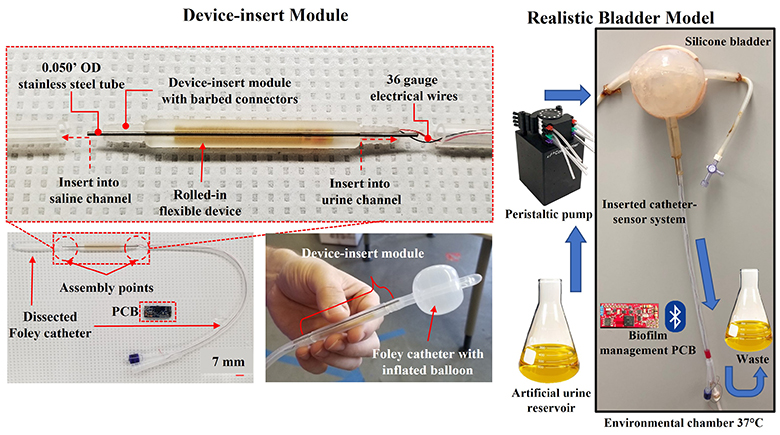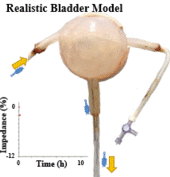
Catheter-associated urinary tract infections (CAUTIs) are one of the most prevalent healthcare acquired infections, accounting for over 25,000 cases in 2018. CAUTI is driven by colonization of an indwelling urinary catheter by bacterial biofilm, complex structures comprised primarily of exopolysaccharides, extracellular DNA, and bacterial cells, which adhere to hydrated surfaces like indwelling medical devices. Notably, biofilms are significantly more antibiotic-resistant than their planktonic counterparts and can disperse throughout the body, leading to complications like bacteremia and sepsis. In this work we present an integrated system for bacterial monitoring and treatment on indwelling Foley catheters. A 3D-printable insert module has been designed to allow integration of interdigitated electrodes with a commercially available Foley catheter. This impedance-based approach allows for continuous bacterial monitoring in a bladder environment without compromising the primary functions of urinary catheters. The sensor is fabricated on a flexible polyimide substrate and is controlled wirelessly using a customized printed circuit board (PCB) and mobile application. Additionally, the electrodes are used to administer a bioelectric effect (BE)-based treatment, providing feedback-driven management of CAUTI. This integrated system was tested in a realistic in vitro model of the catheterized bladder. The sensor displayed an average decrease in impedance of 13.0% over 24 hours of bacterial growth. The BE treatment led to a significant decrease in biofilm biomass and bacterial cell counts after 24 hours of treatment. This work represents an effective and user-friendly approach towards the treatment of biofilm formation in catheters using lower antibiotic dosage. This system has the potential to address CAUTI by detecting the growth of bacteria in real-time to indicate the need for catheter replacement or treatment, reducing the risk of developing an infection.

